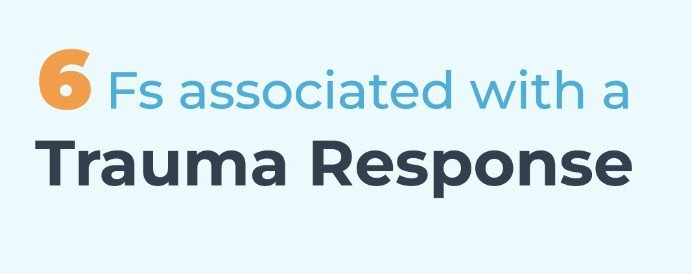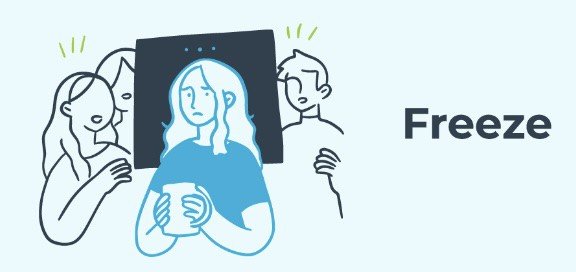How do we move forward?
Written by Taiwo Majekodunmi, MA, LMHC
Did you know that repeated exposure to trauma can rewire your brain?
Imagine having to wake up every day with the significant chance that you will face some form of racism, macroaggression, prejudice, and discrimination. And because racism has engrained itself to be structural and systemic, there is a collective trauma amongst those who have had these unfortunate experiences. Many African Americans in the United States have been impacted negatively by structural racism since slavery. Structural racism has led to disparities in healthcare, disadvantages financially where many Black people will be in a lower socioeconomic status than their White counterparts, and collective trauma, amongst many other adverse outcomes in this underrepresented population.
COLLECTIVE TRAUMA:
Black communities have been experiencing collective trauma for centuries that began with the enslavement and abuse in the United States. The effects of slavery in America have not ended; in fact, some can argue that racism has transformed and rebranded into multiple systems in place that have placed African Americans in vulnerable positions. As indicated by the maternal mortality rate for Black women in the US, it is higher than any other population, and prison populations in America, which consist of mainly Black males, stem from a long history of being severely unjustly policed.
FREQUENCY OF TRAUMA EXPOSURES:
Males:
The frequency of trauma exposure among Black males ages 18 and older puts them at significant risk for experiencing one or more of these deleterious outcomes that may require mental health service use (Gary, 2005; Institute of Medicine, 2006; Snowden, 2003). Nevertheless, Black males are approximately half as likely as their White counterparts to use professional mental health services, even after adjusting for socioeconomic and clinical factors (Gonzalez et al., 2010; Hankerson et al., 2011).
Another study concluded that the factors contributing to the Black male population being less likely to seek mental health treatment for trauma-related symptoms were related to their mistrust and lack of knowledge about the benefits (Ghafoori et al., 2014). In addition, a sample of Black males exposed that transportation to services and financial assistance are considered a need to utilize mental health care.
Women:
When it comes to Black women, the disparities with mental health disparities are alarming. Studies have shown Non-Hispanic Black women are disproportionally likely to receive the needed protective factor of early initiation of prenatal care. Evidently only 67% non-Hispanic Black women participate in prenatal care in the first trimester, compared to the 77% of non-Hispanic White women and 81% of Asian women. As unfortunate as this is, it is not that surprising considering the non-Hispanic Black women have the highest maternal mortality rates in the USA, which stems from a long history of structural racism.
41% of African American women reported seeking care for depression in the past year compared with 60% of non-Hispanic White women (Alegria, Chatterji, Wells, et al., 2008). Furthermore, a national study conducted in 2003 evidenced that 60% of Black women experience report symptoms of depression but only 12% of them seek help or treatment National Alliance on Mental Illness, 2009). It is evident that though Black women are historically vulnerable to depression, trauma and many other mental health challenges, they are less likely to receive the care they need.
Symptoms of PTSD can include:
- Re-experiencing: The event that a person involuntarily or vividly relives the traumatic event.
- Avoidance and emotional numbing: The attempt to stay away from triggers traumatic events or the attempt not to feel at all.
- Hyperarousal (feeling on edge): Being constantly aware of threats or easily startled.
However, some arguments argue against the notion of systemic and structural racism. Many people believe the argument for structural trauma, stating that it’s exaggerated, ignoring the progress developed since the 1960s, and stating that it’s a thing of the past. Other arguments have been that legal and constitutional restrictions hinder race-conscious policymaking.
In contrast, others say that we live in a post-racial society where there are equal opportunities for everyone. Many also believe that people are responsible for their choices; thus, it is not a systemic issue. Kevin Butterloaf (2021) stated, after a study showed that “Black students accounted for 15 percent of the student body in the 2015–2016 school year, but 31 percent of arrests”, that the study did not account for the “historical behavioral differences” between Black and White children. Nevertheless, there has not been substantial evidence to substantiate these claims, mainly because much data and research proves these arguments to be obsolete. However, it does beg the question of why someone would make such claims, ignoring the long history of oppression that is still present.

Trauma Responses:
Several reactions to trauma exist, including fight, flight, freeze, and fawn, also known as collapse, flood, and fatigue (Walker, 2014).
FIGHT RESPONSE:

In the fight state, when faced with a traumatic event, one will confront the perceived threat, and this can look like explosive anger, kicking, punching, or threatening the assailant. When someone has unresolved trauma, they can be in this state constantly, leaving them untrusting and hypervigilant (Walker, 2021).
FLIGHT RESPONSE:
When someone runs away when they perceive a threat, the flight response is explicitly the trauma response employed. The flight response can also happen mentally or symbolically, where distractions allow people to ignore their inner experiences. People who are in this state tend to be anxious and utilize avoidant strategies such as distractions-excessively watching TV, denial-pushing away the complex internal states they do not have, acknowledging their pain, projection-externalizing their emotions/inner experiences onto others and opting out to avoid people, places and any situation that will bring one discomfort.

FREEZE RESPONSE:

In the freeze state, one tends to dissociate when threatened. Freezing can look like spacing out, losing time, numbness, or even brain fog. Many people in this state have difficulty identifying emotions because they tend not to be grounded in the present or reality.
FAWNING RESPONSE:
Fawning, another response to trauma or a threat, is when the individual decides to appease their attacker or threatening person. In their everyday lives, this can look like people pleasing, putting others’ emotions before their own, constantly saying yes to others, and having porous boundaries, which leads to codependency.

FLOODING RESPONSE:

Flooding is when someone is being overwhelmed or “flooded” with intense emotions once they perceive a threat. This response can make it difficult to be grounded in the present or confront the perceived danger. Flooding tends to be more common in neurodivergent individuals, people with mental disorders such as bipolar disorder and borderline personality disorder, or people with rejection sensitivity.
FATIGUE OR FLOP RESPONSE:
One with the fatigue/flop response, people feel tired or sleepy in response to a perceived threat. Like the freeze state, one would be more likely to dissociate or numb themselves. Apparently, “sleeping” is often observed in infants who tend to shut down when exposed to excessive stress. Once in adulthood, those who have had the “sleeping response” may present as depersonalization and a sense of loss of identity, derealization (sensed loss of reality).

Barriers to treatment:
Studies have shown that barriers to mental health treatment include financial resources, mistrust of healthcare providers, stigma of mental health, lack and information of mental health resources (Copeland and Snyder, 2010). The intersectional identities of a Black woman along with the psychological distress they encounter due to their historic cultural and structural family positions in US society (Woods-Giscombe, 2008; Woods-Giscombe, Lobel, Zimmer, Cene, & Corbie-Smith, 2015).
Mistrust is one of the most influential factors in Black women’s underuse of mental health services Holden and colleagues (2013). According to (Holden, Bradford, Hall, & Belton, 2013), Black women are more likely to be underdiagnosed for affective disorders and overtreated for psychotic disorders. Additionally, they are less likely to receive more comprehensive treatment modalities than their White counterparts, which has been attributed to bias and a lack of cultural competency in the healthcare system (Holden, Bradford, Hall, & Belton, 2013). These disparities are not individual issues, but structural and would need to be addressed on a systemic level.
The Black community has faced collective and complex trauma that tends to lead to C-PTSD. Complex trauma is a form of repeated exposure to traumatic events over an extended period (Briere & Scott, 2015; Felitti et al., 1998; The National Child Traumatic Stress Network, 2020). As one of the most vulnerable populations in the US, Black people have repeatedly experienced various forms of racism and structural racism. Many people in this population will likely develop PTSD (Post Traumatic Stress Disorder), C-PTSD, and other trauma-induced disorders. With the stigma of mental health treatment and the intersectionality of racial trauma, amongst several other risk factors related to sexuality and gender, people of color are at more at risk to have mental health disorder and are less likely to receive treatment.
The Goals:
The goal is to utilize the engagement response when we perceive a threat. Understanding these various responses allows us to seek the right people and resources to get the help we deserve.
Studies show Blacks were only 50 percent as like to receive psychiatric treatment as Whites for diseases of similar severity. Statistics also show that Black people are more likely than Whites to terminate treatment prematurely. Studies have shown adults with diagnosis-based need for mental health or substance abuse care, 37.6% of Whites, but only 22.4% of Latinos and 25.0% of African Americans, receive treatment (McGuire, 2008).
As a population already vulnerable to PTSD, CPTSD, and trauma in general, this means that we are more likely to be stuck on of the “6 Fs” (A.M, 2021). As a result of one’s unresolved trauma, it is more likely that generations following us will mirror our reactions and fall into the same pattern of intergenerational trauma. To be healed, one must confront their trauma and must align with the right mental health resources.
TREATMENT: TOP-DOWN VERSUS BOTTOM-UP
There are many forms of trauma treatment, including Cognitive Behavioral Therapy, Cognitive therapy, Psychodynamic Therapy, Eye Movement Desensitization and Reprocessing, Cognitive Process Therapy, and Somatic Therapy, amongst many other forms of treatment. It is beneficial to understand the kind of approach that would be most effective for you, and one way one can do that is to discern whether you need a strategy focused on bottom-up or Top-down processing.
TOP-DOWN TREATMENT
Top-down processing is the process of perception, while bottom-up is the process of sensation (Rousey, 2023). In Top-down processing, pattern recognition develops via contextual information (Haynes, 2021). In this approach, the belief is that enhancing cognitive regulation allows the client to alter their reactions to their triggers, perceived threats, conflict, stressors, and triggers related to trauma. CBT, CPT and DBT psychodynamic therapy and regular talk therapy would fall under this approach.
In therapy, the therapist focuses on your thought patterns and assists you with tools to live healthier lives.
BOTTOM-UP TREATMENT
Bottom-up therapies are more holistic and work for a client. The treatment first focuses on your sensations and works to modulate the body’s physiological responses to trauma or stressors. It incorporates dual awareness and feeling, regulating body and brain reactions. Somatic Experiencing, EMDR, sensorimotor psychotherapy, brain-spotting, Accelerated Experiential Dynamic Psychotherapy (AEDP) and expressive arts-based therapy are different forms of bottom-up approaches, amongst many others.
Trauma treatment is not one size fits all, and it’s okay to try different approaches according to what works best for you. If you’re afraid to try, try anyway. It’s better to try than not to try at all.
References
California Black Women’s Health Project. (2003). Healing for the mind, body & soul. News notes from California Black women’s health project Retrieved May 15, 2005, from http://oldsite.cabwhp.org/pdf/oct2003.pdf
Copeland VC, & Snyder K (2010). Barriers to mental health treatment services for low-income African American women whose children receive behavioral health services: An ethnographic investigation. Social Work in Public Health, 26, 78–95. doi: 10.1080/10911350903341036
McGuire TG, Miranda J. New evidence regarding racial and ethnic disparities in mental health: policy implications. Health Aff (Millwood). 2008 Mar-Apr;27(2):393-403. doi: 10.1377/hlthaff.27.2.393. PMID: 18332495; PMCID: PMC3928067.
Navigating Therapy Approaches: Bottom-Up vs. Top-Down | Common Thread Counseling
Thomas G. McGuire, Department of Health Care Policy, Harvard Medical School, 180 Longwood Ave., Boston, MA 02115.
The 6Fs of Trauma Responses » NeuroClastic
Three Common Fallacies in Arguments About Systemic Racism – Areo (areomagazine.com)
Holden KB, Bradford LD, Hall SP, & Belton AS (2013). Prevalence and correlates of depressive symptoms and resiliency among African American women in a community-based primary health care center. Journal of Health Care for the Poor and Underserved, 24, 79–93.
Woods-Giscombe CL, Lobel M, Zimmer C, Cene C, & Corbie-Smith G (2015). Whose stress is making me sick? Network-stress and emotional distress in African American women. Issues in Mental Health Nursing, 36, 710–717.



You must be logged in to post a comment.